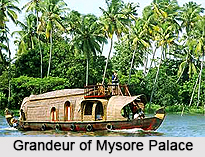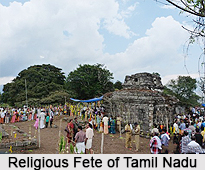 Musical ideology in Tamilakam has had a profound effect on the Indian state of Tamil Nadu.
Musical ideology in Tamilakam has had a profound effect on the Indian state of Tamil Nadu.
From the history, when taken as a part of cultural history, invites a structural approach of some kind. Music history has always contained a certain amount of cultural history either in depicting institutions and social roles, or in determining stylistic or constitutional norms and current aesthetic ideas.
Role of Music
Music as an instrument of power makes people forget the general fear of jungle life, makes them believe in the harmony of a civilized life and silences their misgivings. Music is ritual power when it is a question of making people forget the fear of violence; it is a representative power when it is a question of making them believe, and the bureaucratic power when it is a question of silencing those who oppose it. Music thus localizes and specifies power.
Functions of Music
The primary function of music depends on its mysterious appositeness to a code of power, i.e. the way in which it participates in the crystallization of social organization in an order. Music creates political order because it is a minor form of sacrifice. It strengthens the belief that a society is possible if individuals are sublimated. Ideas of political institutionalization germinate. At this stage, music and dance first provoke anxiety and then provide a sense of security. They create a problem in order to solve it. Violent energies are summoned up and directed to groups to provide non-violent support. The music becomes a necessary attribute of power. The earliest attempts during the Sangam period of Tamil history demonstrate this hypothesis of music as a nascent stimulation of political organization. The music of the Sangam epoch stimulated the accepted forms of social transformation.
Religion of Tamil Nadu
The religion of the early Tamils was animistic: divine forces were conceived of as immanent within actual habits and as potentially harmful. Divine forces (ananku), for the most part, were not personified as Gods.
Mythology in Tamil Literature
It is noteworthy that early Tamil literature is wholly lacking in mythology. The ananku clings to a woman and, as long as it is controlled, it lends auspiciousness to her life and to her husband. If not controlled duly, it may wreak havoc. This was an indirect way of emphasizing the chastity of women.
Rituals of Tamil Nadu
The rituals like velanatal and Velan Veriyatal that are mentioned in Tamil literature, presuppose belief in the existence of a spirit apart from the body, and its temporary possession of another man`s or woman`s body for good or for evil. For instance, a soldier who fell fighting was remembered by his compatriots. The spot where he fell or lived was usually marked by a hero`s stone (nadukat), which became an object of worship. The stone was supposed to be inhabited by the dead warrior`s spirit. The doctrine of reincarnation was accepted by the Tamils of the early centuries of the Christian era. The doctrine served as an ethical check on men`s lives, and also offered endless opportunity and hope for salvation.
Society of Tamil Andu
In all these, music served as a regulating tool of society. Since, of all the other sensual pleasures, it is believed music corrupts the soul the least, it was qualified to be such a tool. In the ritual veriyatal, music was a locus of subversion, a transcendence of the body. Society attempted to integrate it into an official religion. As a quintessential mass activity, it functioned as a necessary factor for legitimacy. Support from venthu was necessary to channelize it as a system of power. Music in the daily life of the ruler became necessary and inseparable. Since the panar invariably sang `eulogies`, it was deemed as court music. The compositions were elitist and monopolistic productions. They served as vehicles of political propaganda. The consumers of such music belonged to every social class - peasants, artisans, etc. The panan moved from place to place offering their services. They organized the circulation of music (propaganda) within society.
Religious Themes in Tamil Nadu
Religious themes influenced the performing arts of dance and music. Compositions in praise of kings, chieftains and patrons formed the core of `secular music`. A patent characteristic of unbroken tradition is devotion to established norms. When convention and validity come closer towards union, the situation obviates the need to reflect on how it happened, or which aspect logically or chronologically preceded the other. Musical genres as eulogies are autonomous. `Voluntary music` (for example, the Tevaram of the Nayanmars and the prabhandams of the Alzhwars) is freely conceived and executed. The epic Cilappatikaram provides varieties of `collective singing and dancing.` In these instances, composing was an on-the-spot, voluntary effort. Therefore to appreciate such ritualistic compositions, we must allow free rein to our imagination and fill the gaps of aesthetic shortfalls.
Religious History of Tamil Nadu
The medieval king was an ardent worshipper and this disposition received ample recognition at the hands of the court poets. The king`s largesse was seen as an inherent factor. This largesse is to be distinguished from the largesse extended by rulers of the Sangam age. Acts of devotion by the king were praised by the poets. The panegyric of medieval times was totally different from the early bardic style of poetry of the Sangam epoch. The prime hero of the panegyric was the deity. The king was the second hero insofar as he served the deity. It was immaterial who patronized the poet. The poet determined the king`s rank within a devotional context. The patron and the poet both saw the deity as their ultimate refuge. The Chola court poet established a suggestive graded link between king and god. A patent change in the balance of relations between patron and poet could be noticed in post-Chola times. The king who denied honour to the poet ended up sharing his throne with him.



















